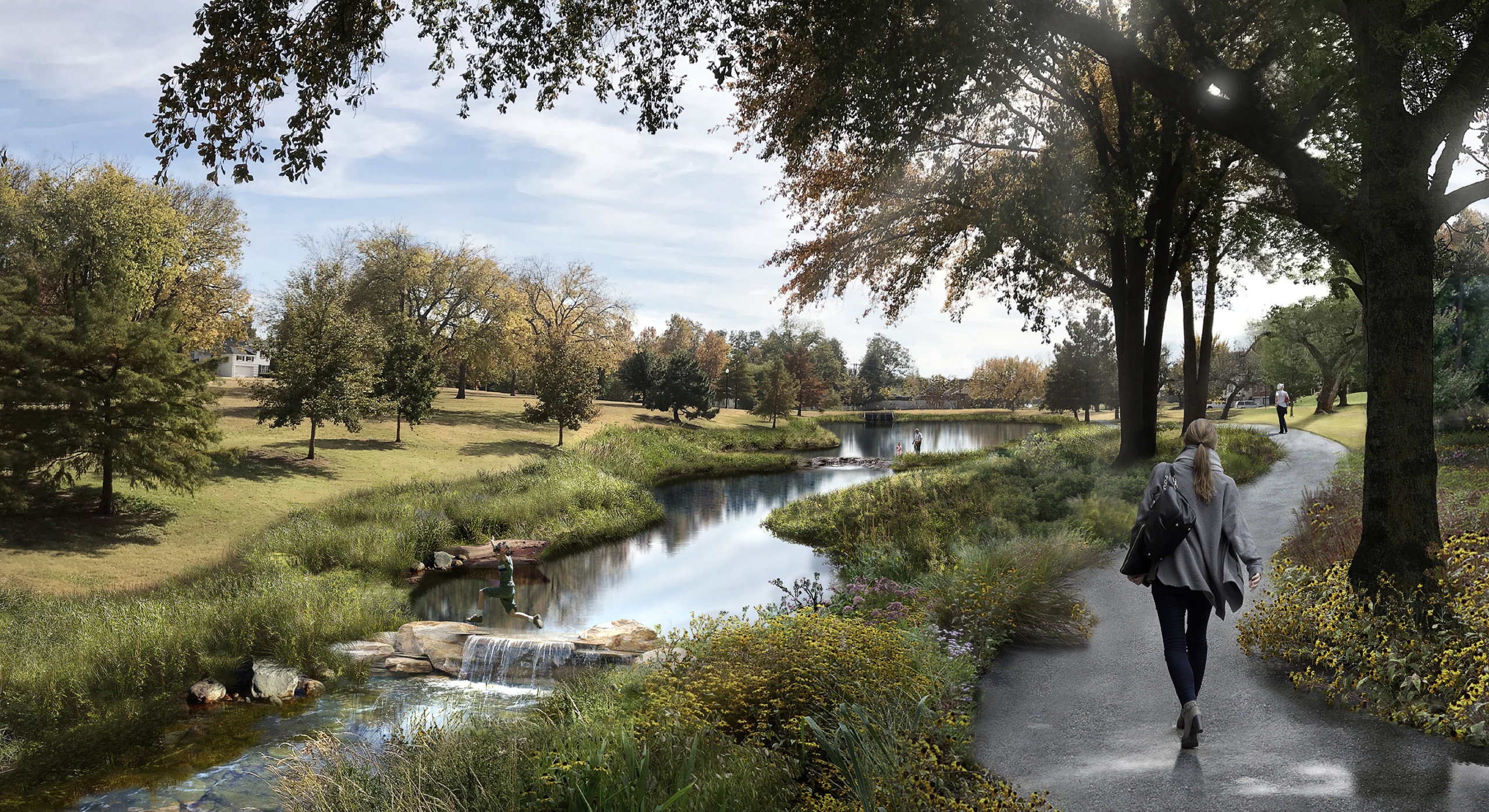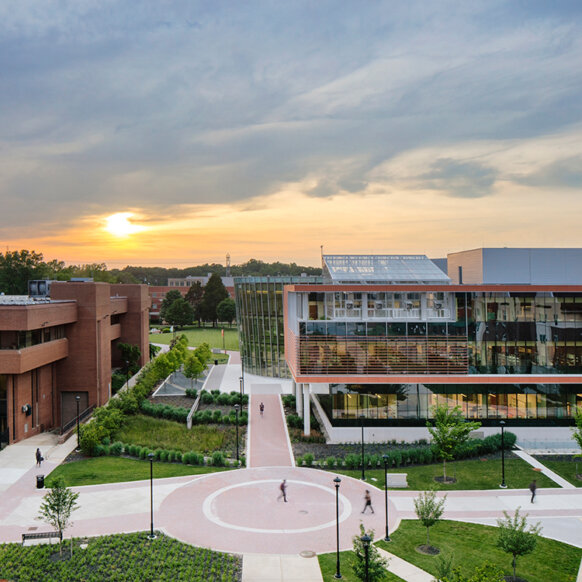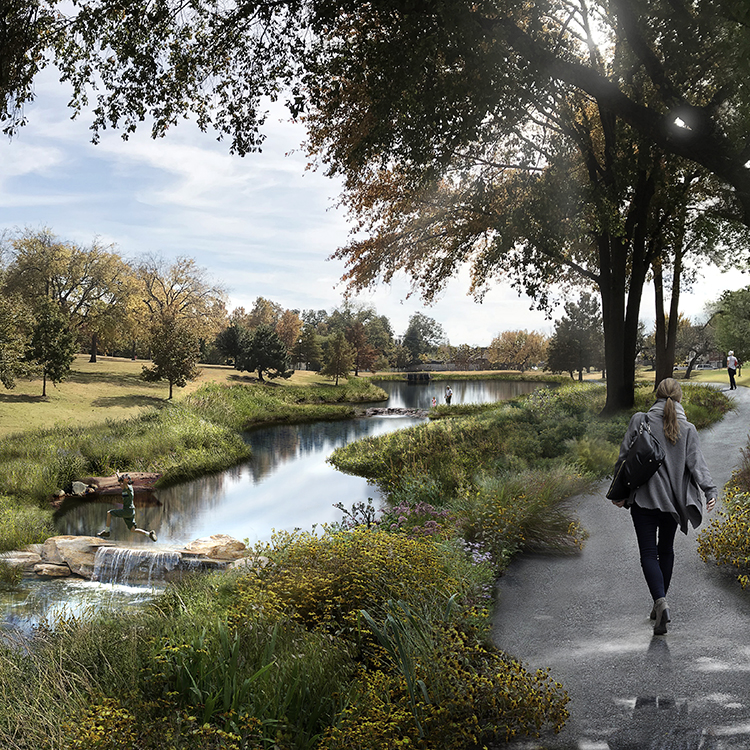
Greening America’s Communities: Oklahoma City Central Neighborhoods
Oklahoma City has seen two historic floods in the past six years, and intense rainfalls have increased dramatically over the past several decades. This has emphasized aging stormwater infrastructure and has caused repeated damage to vehicles, homes, schools and recreational areas across the City.
Greening America’s Communities is an Environmental Protection Agency’s Office of Sustainable Communities program to develop an innovative and implementable vision of distinctive, environmentally friendly neighborhoods, utilizing innovative green infrastructure systems. Our design effort for five key study areas within densely populated and historic Oklahoma City neighborhoods, applies sustainable design strategies to increase safety and accessibility, improve water quality and build upon community character with multi-purpose, highly functional landscapes. Our team developed a comprehensive green infrastructure toolkit to provide the City with a variety of solutions for the varied conditions across the city.

The EPA wanted better connected neighborhoods for the people of Oklahoma City. As a result we increased the sidewalk network, improved pedestrian crossings and newly defined bicycle routes that provide connections from commercial districts to adjacent neighborhoods and nearby schools. The new mobility facilities also incorporated green infrastructure in the form of pervious pavements, stormwater storage below bicycle lanes, boulevard rain gardens and street trees.
Ryan Baker, Associate Planner, Office of Sustainability and Planning, City of Oklahoma City
Utilizing existing infrastructure paired with multi-function stacked stormwater BMP’s our team was able to better mitigate districtwide flooding and improve stormwater capture and control. By integrating native landscaping into the project area we were able to help cleanse stormwater, reduce urban heat island effect, provide wildlife habitat, while also lessening the maintenance burden for the City.
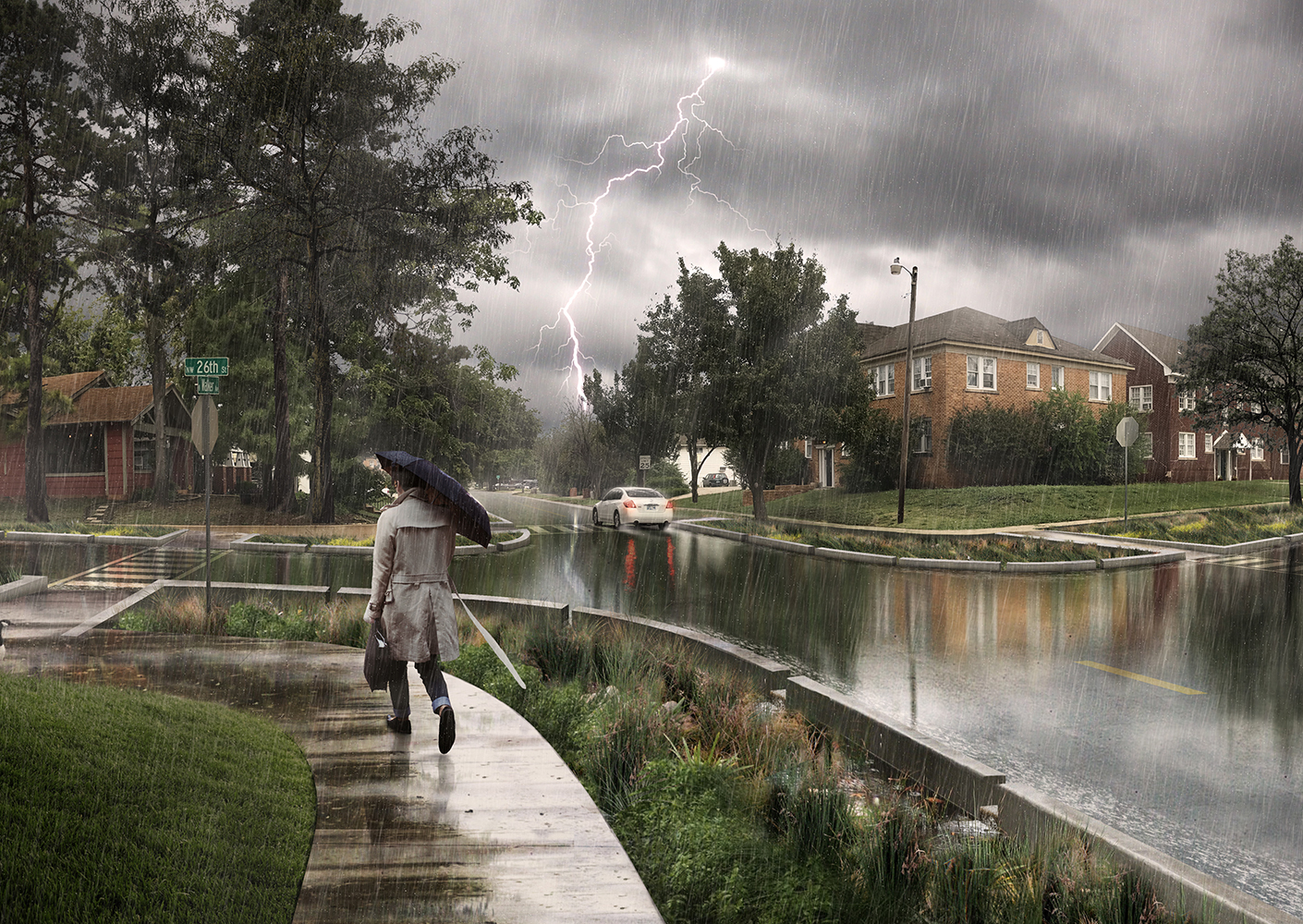
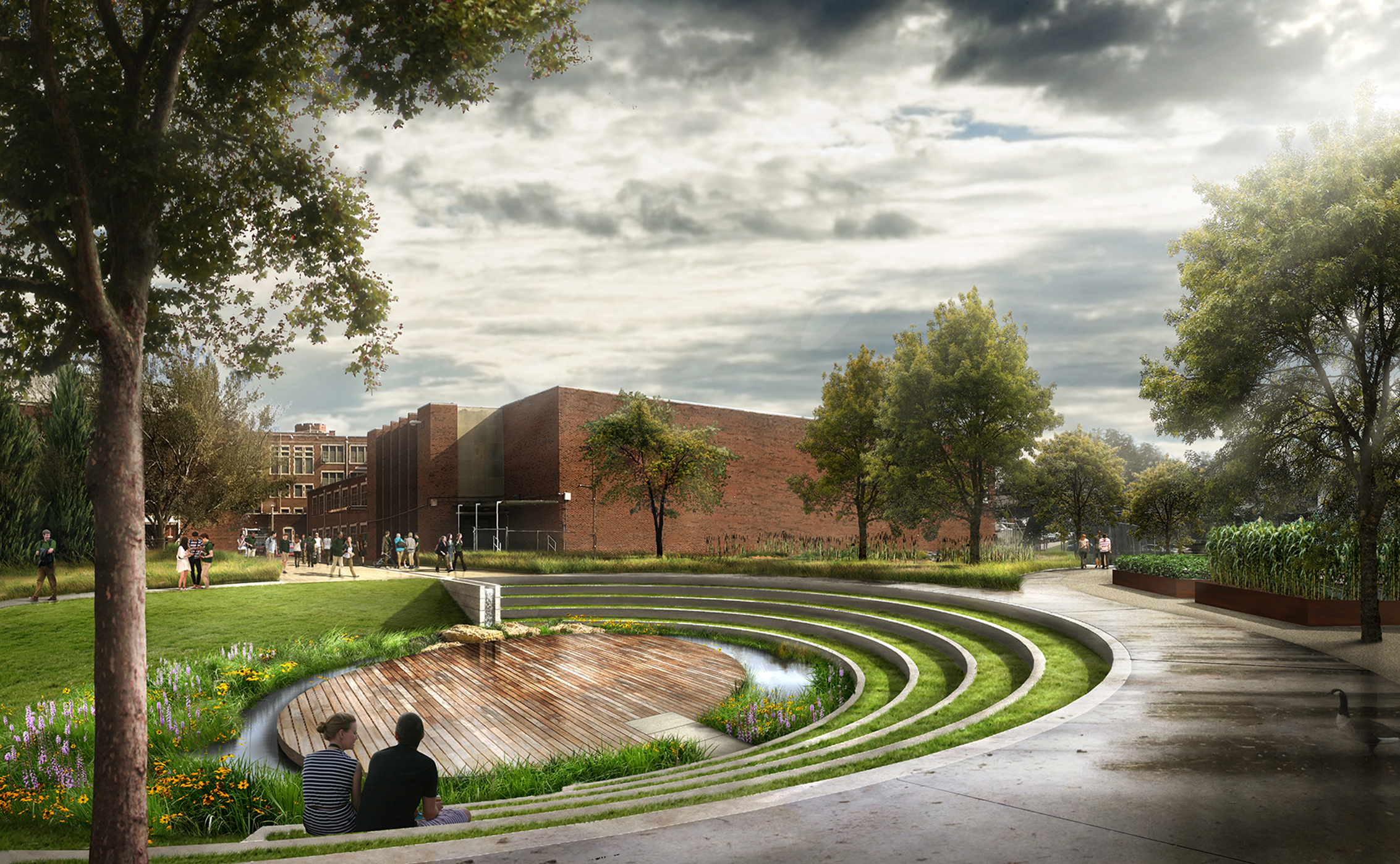
The planning process developed a multi-pronged approach to engagement that included stakeholders across three separate neighborhoods, multiple City Departments, jurisdictional partners and the Environmental Protection Agency (EPA). The engagement developed common goals, built consensus around plan recommendations and created advocates for design implementation.
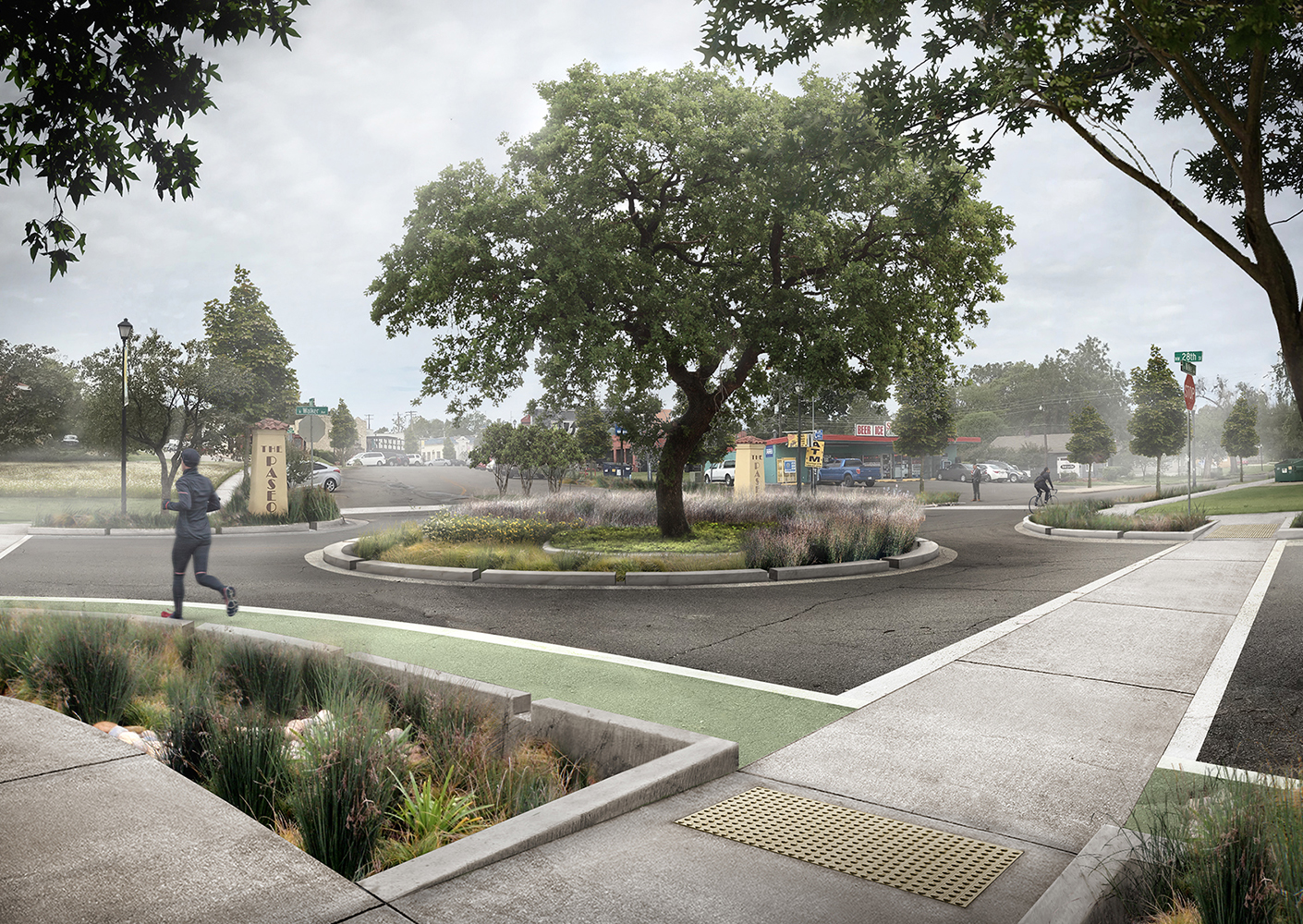
A key outcome of the study, and a specific request from Oklahoma City was the creation of before/after rendered designs for each of the five study areas to help the City obtain funding for improvements.
